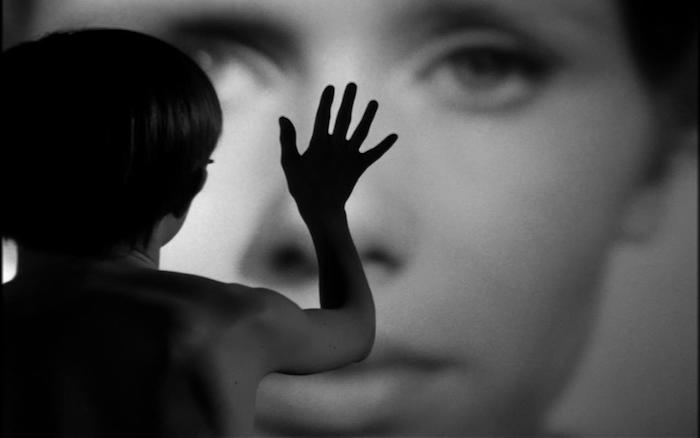La ri-mediazione digitale e la dissolvenza dell’io nel Photojournal di Annie Ernaux
Abstract
Scopo del contributo è l’analisi del Photojournal, un dispositivo fototestuale autobiografico che Annie Ernaux compone come premessa al volume delle sue opere, Écrire la vie (Gallimard, 2011). La sezione biografica del volume diventa una premessa autobiografica, dove l’autrice compone 70 foto e 100 brani dei suoi diari per spiegare le ragioni della sua scrittura. Le foto illustrano la realtà materiale e i diari esprimono la realtà soggettiva: le due condizioni che hanno permesso la scrittura delle opere dell’autrice.
L’analisi della composizione fototestuale ha messo in rilievo due effetti di profondità: il palinsesto e il collage. Attraverso le sovrapposizioni degli strati dei documenti riprodotti, Ernaux traduce nello spazio delle pagine, il tempo della narrazione autobiografica (come nella versione in prosa Les Années, 2008).
La ri-mediazione digitale dei diari ha permesso ad Ernaux di ricostruire un sé in continuo divenire, un essere nomade e sempre in transito da un passaggio ad un altro. Attraverso lo schermo del computer Ernaux non soltanto si rispecchia nel suo passato, ma ritrova “un displaytutto per sé”, grazie al quale continuare la ricerca della forma impersonale della narrazione autobiografica come dissolvenza dell’io.
Downloads
Riferimenti bibliografici
Bacholle-Bošković, Michèle, Annie Ernaux. De la perte au corps glorieux, Rennes, Presses Universitaires de Rennes, 2011.
Bacholle-Bošković, Michèle, “Ph-auto-biographie : Écrire la vie des photos”, Women in French Studies, 21 (2013): 79-83.
Bacholle-Bošković, Michèle, “Annie Ernaux ph-auto-biographe”, Women in French Studies, 22 (2014): 72-86.
Bolter, Jay David – Grusin, Richard, Remediation. Understanding New Media, Cambridge, The MIT Press, 1999.
Carbone, Mauro, Filosofia-schermi. Dal cinema alla rivoluzione digitale, Milano Raffaello Cortina editore, 2016.
Casetti, Francesco, “Che cosa è uno schermo, oggi?”, Rivista di estetica, 55 (2014): 103-121.
Cometa, Michele, “Forme e retoriche del fototesto letterario”, Fototesti. Letteratura e cultura visuale, Eds. Michele Cometa, Roberta Coglitore, Macerata, Quodlibet, 2016: 69-116.
Cometa, Michele, Perché le storie ci insegnano a vivere. La letteratura necessaria. Raffaello Cortina editore, 2017.
Coglitore, Roberta, “I dispositivi fototestuali autobiografici. Retoriche e verità”, Between, 4.7 (2014): http://ojs.unica.it/index.php/between/article/view/1170.
Coglitore, Roberta, “Le verità dell’io nei fototesti autobiografici”, Fototesti. Letteratura e cultura visuale, Eds. Michele Cometa, Roberta Coglitore, Macerata, Quodlibet, 2016a: 49-68.
Coglitore, Roberta, “Biopolitica e biopoetica nella pratica autobiografica contemporanea”, Vita, politica, rappresentazione. A partire dall’Italian Theory, Eds. P. Maltese e D. Mariscalco, Verona, Ombre corte, 2016b: 153-172.
Hugueny-Léger, Elise, “Écrire le retour sur soi : postures d’engagement et d’accompagnement dans les socioanalyses d’Annie Ernaux et de Didier Eribon”, Annie Ernaux Un engagement d’écriture, a cura di P.-L. Fort, V. Houdart-Merot, Paris, Presses de la Sorbonne Nouvelle, 2015: pp. 159-168.
Eakin, Paul, John, How Our Lives Become Stories. Making Selves, Ithaca, Cornelly University Press, 1999.
Ernaux, Annie, Les années, Paris, Gallimard, 2008.
Ernaux, Annie, Écrire la vie, Paris, Gallimard, 2011a.
Ernaux, Annie, L’écriture comme un couteau, intervista con F.-Y. Jeannet, Paris, Gallimard, 2011b.
Ernaux, Annie, Mémoire de fille, Paris, Gallimard, 2016.
Ernaux, Annie, Retour à Yvetot, Paris, Éditions du Maconduit, 2013.
Genette, Gérard, Seuils, Paris, Seuil, 1987.
Greif, Hans-Jürgen, “Annie Ernaux : Écrire la vie”, Moebius, 135 (2012): 177-185.
Mitchell, W.J.T., Pictorial turn. Saggi cultura visuale, Milano, Raffaello Cortina editore, 2017.
Tani, Stefano, Lo schermo, l’Alzheimer, lo zombie. Tre metafore del XXI secvolo, Verona, Ombre corte, 2014.
Thumerel, Fabrice, “Passage(s) Ernaux”, Annie Ernaux Un engagement d’écriture, a cura di P.-L. Fort, V. Houdart-Merot, Paris, Presses de la Sorbonne Nouvelle, 2015: 111-124.
Informazioni sul copyright
Questa licenza permette a terzi di riprodurre, distribuire, comunicare al pubblico, esporre in pubblico, rappresentare, eseguire, recitare e modificare quest'opera, purché vengano citati l'autore e la rivista. Questa è la più ampia tra le licenze Creative Commons, rispetto alle libertà concesse a terzi sulle opere licenziate sotto Attribuzione.









